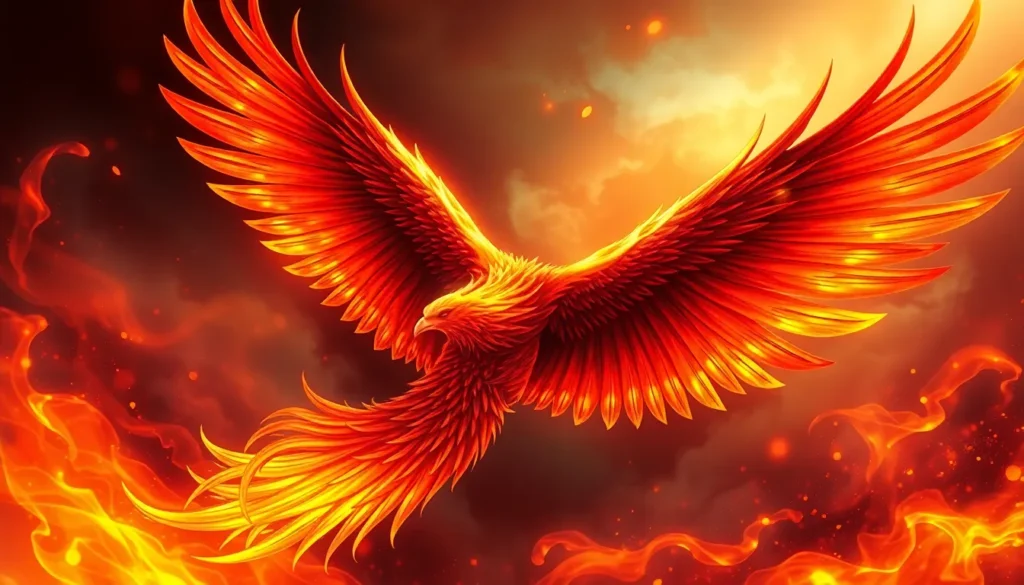The phoenix has captivated our collective imagination for millennia as the ultimate symbol of rebirth and transformation. This magnificent mythical bird doesn’t just represent death and renewal – it’s become a powerful aesthetic icon that influences everything from tattoo designs to home décor and fashion trends.
We’ve witnessed the phoenix aesthetic surge across social media platforms where its striking imagery resonates with anyone seeking personal reinvention. The bird’s dramatic plumage of fiery reds oranges and golds creates visually stunning compositions that photographers artists and designers can’t resist incorporating into their work.
Whether you’re drawn to the phoenix for its symbolic meaning or simply love its breathtaking visual appeal we’ll explore how this legendary creature continues to inspire modern aesthetics. From ancient mythology to contemporary art the phoenix remains one of nature’s most compelling artistic subjects.
The Symbolism and Meaning Behind the Phoenix Aesthetic Bird
The phoenix aesthetic bird embodies transformation through its mythological foundation rooted in ancient civilizations. Greek mythology describes the phoenix as a magnificent bird that lives for 500 to 1,461 years before building a nest of aromatic wood and spices. Egyptian culture presents the bennu bird as the original phoenix inspiration, connecting it to the sun god Ra and the concept of eternal renewal.
Rebirth symbolism defines the core meaning of phoenix aesthetic imagery across cultures. Artists incorporate phoenix designs to represent personal transformation, overcoming adversity, and emerging stronger from life’s challenges. The cyclical nature of death and resurrection creates powerful visual metaphors that resonate with individuals seeking change or celebrating major life transitions.
Cultural interpretations of the phoenix vary significantly across different regions:
- Chinese mythology features the Fenghuang, representing virtue and grace in imperial symbolism
- Japanese culture embraces the Ho-Oh as a symbol of the imperial household and peace
- Persian literature describes the Simurgh as a benevolent bird with healing powers
- Russian folklore includes the Firebird as a magical creature bringing both blessing and challenge
Color symbolism within phoenix aesthetic designs carries exact meanings that artists leverage for emotional impact. Red flames represent passion, courage, and life force energy. Golden hues symbolize enlightenment, wisdom, and spiritual awakening. Orange tones convey creativity, enthusiasm, and personal growth. Purple accents indicate mystery, transformation, and higher consciousness.
Modern psychological interpretation connects phoenix imagery to post-traumatic growth and resilience theories. Mental health professionals recognize the phoenix metaphor as a powerful tool for therapy and personal development. The bird’s aesthetic appeals to individuals processing grief, addiction recovery, career changes, or relationship transitions.
Spiritual significance extends beyond religious boundaries to cover universal themes of hope and renewal. Contemporary spiritual practices incorporate phoenix symbolism in meditation, manifestation work, and energy healing modalities. The aesthetic serves as a visual reminder of humanity’s capacity for continuous growth and self-improvement.
Visual Characteristics of Phoenix Aesthetic Designs
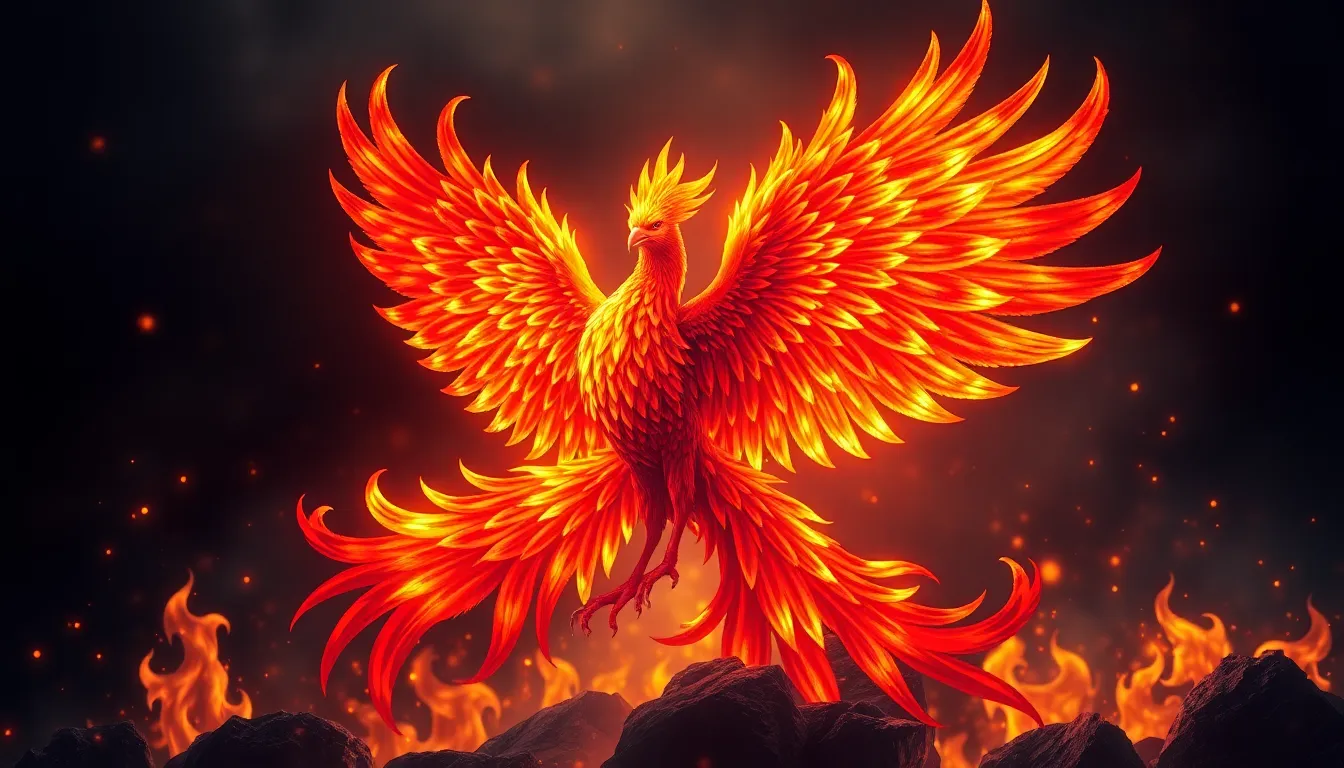
Visual characteristics of phoenix aesthetic designs combine ancient symbolism with contemporary artistic expression. These design elements create powerful imagery that resonates across multiple creative mediums and cultural contexts.
Color Palettes and Fire Elements
Color palettes in phoenix designs center around fire-inspired hues that evoke the bird’s legendary rebirth from flames. Red dominates most phoenix compositions, ranging from deep crimson to bright scarlet, representing the intensity of transformation and passion. Gold accents appear frequently in traditional depictions, symbolizing divine light and spiritual enlightenment through metallic sheens and gradient effects.
Orange tones bridge the gap between red and yellow elements, creating ever-changing visual flow that mimics flickering flames. Artists incorporate amber, burnt orange, and coral shades to add depth and movement to phoenix illustrations. Purple elements appear in contemporary interpretations, signifying mystical transformation and spiritual evolution through violet gradients and lavender highlights.
Fire elements manifest through various visual techniques that enhance the phoenix’s mythical nature. Flame tongues extend from wing tips and tail feathers in sweeping curves that follow natural fire patterns. Ember particles scatter around phoenix figures as glowing dots and sparks that create atmospheric effects. Heat distortion effects blur background elements, suggesting the intense energy surrounding the phoenix during its rebirth cycle.
Wing and Feather Patterns
Wing structures in phoenix designs vary significantly based on artistic interpretation and cultural influence. Traditional patterns feature layered feather arrangements that create dimensional depth through overlapping scales and graduated sizing. Primary flight feathers extend in graceful arcs, often incorporating flame-like edges that blend organic bird anatomy with fire imagery.
Feather patterns showcase intricate detail work that distinguishes phoenix designs from standard bird illustrations. Individual feathers display flame-shaped tips that curve upward like flickering fire tongues. Iridescent effects appear through color gradients that shift from deep reds to bright golds, mimicking the way real bird feathers reflect light.
Stylized interpretations transform traditional feather patterns into geometric shapes and abstract forms. Art nouveau influences create flowing, organic lines that emphasize the phoenix’s graceful movement through space. Modern minimalist approaches reduce feather complexity to essential elements while maintaining the bird’s recognizable silhouette and symbolic power.
Artistic Styles and Interpretations
Artistic styles in phoenix design range from photorealistic depictions to highly stylized abstract representations. Traditional watercolor techniques create soft, flowing effects that emphasize the bird’s ethereal nature through transparent layering and color bleeding. Digital art allows for precise control over lighting effects and particle systems that enhance the magical aspects of phoenix imagery.
Tattoo artistry has developed exact phoenix conventions that work within the constraints of skin as canvas. Bold outlines define wing shapes and body contours, while color saturation creates vibrant focal points that age well over time. Japanese influenced designs incorporate wind patterns and cloud elements that complement the phoenix’s flight dynamics.
Contemporary interpretations blend phoenix imagery with modern design principles such as geometric patterns and negative space usage. Vector graphics reduce phoenix forms to essential shapes while maintaining symbolic recognition. Street art styles apply phoenix motifs to urban environments through graffiti techniques and large scale murals that transform public spaces.
Sculpture and three dimensional representations explore phoenix forms through materials like bronze, glass, and steel that can withstand outdoor elements. Kinetic sculptures incorporate movement elements that simulate wing motion and flame dancing. Installation art creates immersive phoenix experiences through lighting projection and interactive technology integration.
Popular Applications of Phoenix Aesthetic Bird Art
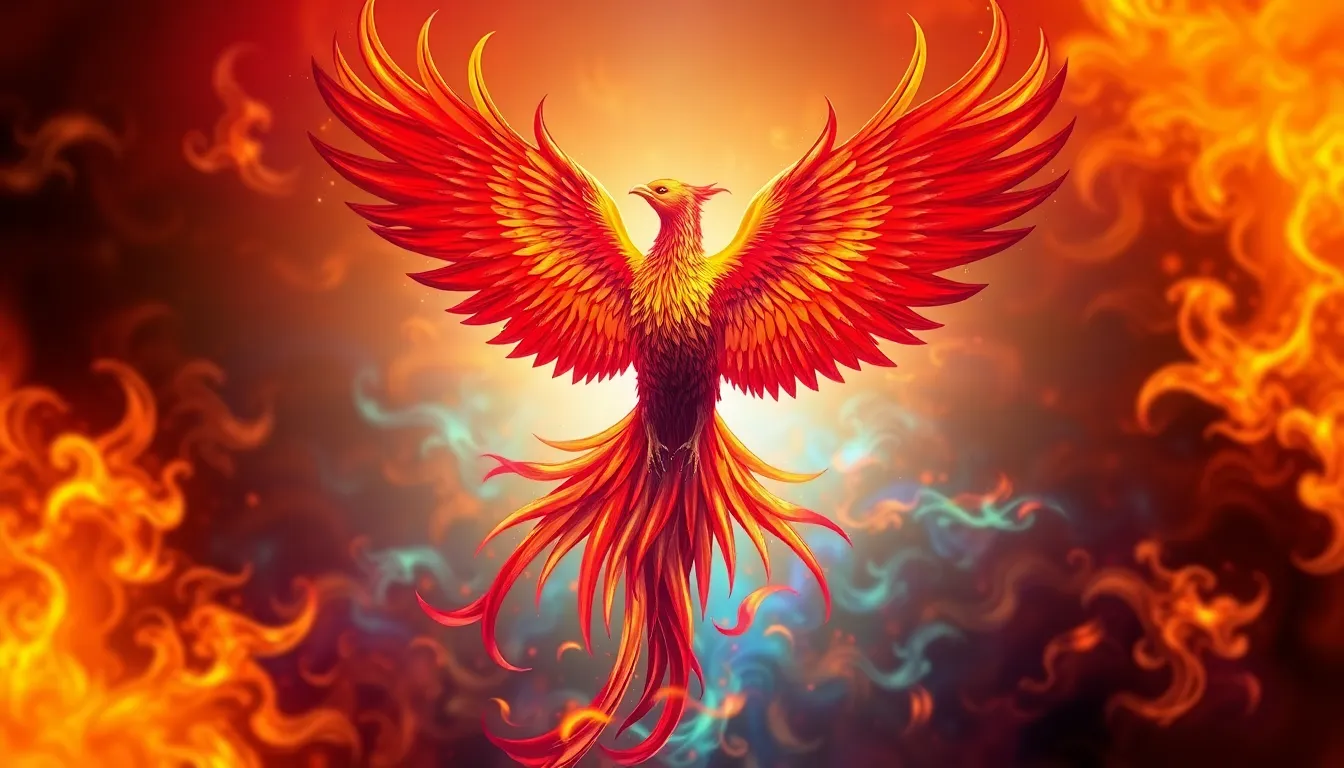
Phoenix aesthetic bird art transforms creative industries through its powerful symbolism and striking visual appeal. Artists and designers integrate phoenix imagery across multiple mediums to capture themes of transformation and renewal.
Digital Art and Illustrations
Digital artists create phoenix aesthetic pieces using advanced software platforms like Adobe Creative Suite and Procreate. We observe three primary categories emerging in contemporary digital phoenix art: concept art for gaming and entertainment, social media graphics for branding campaigns, and NFT collections featuring mythical bird themes.
Gaming studios commission phoenix illustrations for character designs, environmental backgrounds, and promotional materials. Artists employ techniques like layered fire effects, particle systems, and ever-changing lighting to enhance the mystical qualities of phoenix imagery. Digital illustrations often incorporate gradients from deep crimson to bright gold, creating depth through color transitions.
Social media platforms showcase phoenix aesthetic content through Instagram posts, Pinterest boards, and TikTok videos. Content creators use digital phoenix art for profile headers, story highlights, and branded merchandise designs. These applications typically feature simplified color palettes and bold compositions optimized for mobile viewing.
Tattoo Designs and Body Art
Phoenix tattoo designs represent one of the most sought-after mythical creature categories in modern body art. Tattoo artists adapt phoenix imagery to complement body contours, with placement options including back pieces, sleeve designs, and chest panels. We document exact techniques that enhance phoenix symbolism in tattoo applications.
Traditional tattoo styles emphasize bold outlines and solid color fills, drawing from American traditional and Japanese irezumi influences. Contemporary approaches incorporate photorealistic shading, watercolor effects, and geometric elements that modernize classic phoenix motifs. Artists often combine phoenix imagery with complementary symbols like lotus flowers, rising suns, or Celtic knots.
Placement considerations affect design elements significantly. Back pieces allow for expansive wing spans and detailed feather work, while smaller placements focus on simplified phoenix silhouettes or stylized head portraits. Color choices in tattoo applications must account for skin tone compatibility and long-term color retention.
Fashion and Accessories
Fashion designers integrate phoenix aesthetic elements into clothing lines, jewelry collections, and accessory designs. We identify recurring applications across luxury brands, streetwear labels, and independent designers who embrace mythical bird symbolism.
Clothing applications feature phoenix embroidery on jackets, printed graphics on t-shirts, and woven patterns in scarves and shawls. High-end fashion brands like Alexander McQueen and Dolce & Gabbana incorporate phoenix motifs into runway collections, emphasizing craftsmanship through hand-sewn details and metallic thread work.
Jewelry designers create phoenix-inspired pieces using materials ranging from sterling silver to precious gemstones. Common applications include pendant necklaces featuring wing silhouettes, earrings with feather textures, and rings incorporating fire-colored stones like garnets and citrines. Fashion accessories extend to handbags with phoenix hardware, phone cases featuring digital phoenix art, and home décor items like throw pillows and wall tapestries.
Accessory designers target exact demographics through price points and styling choices. Fast fashion retailers offer affordable phoenix-themed items, while artisan creators focus on handcrafted pieces that emphasize unique interpretations of traditional phoenix symbolism.
Cultural Variations of the Phoenix Aesthetic
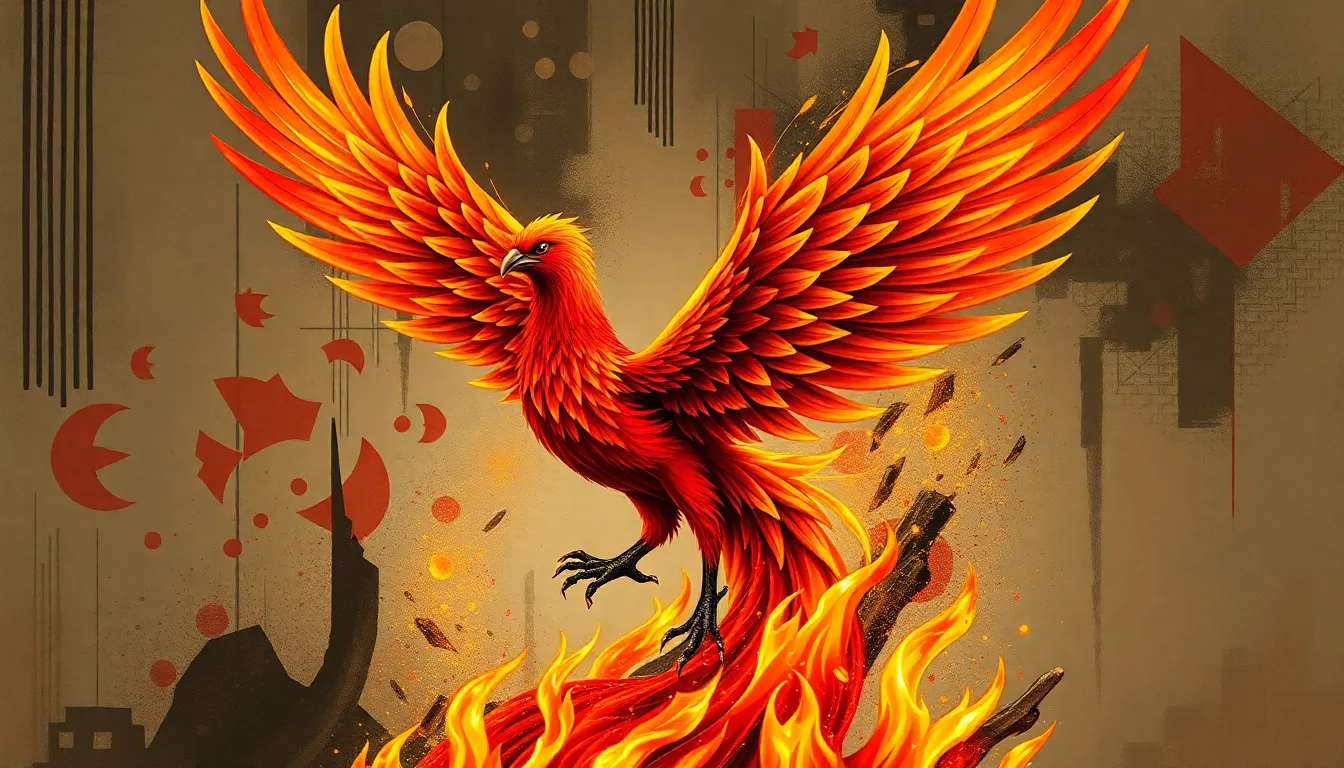
Cultural interpretations of phoenix aesthetic bird imagery demonstrate remarkable diversity across global traditions, each bringing unique visual elements and symbolic meanings to this mythical creature. We observe distinct artistic approaches that reflect regional values, spiritual beliefs, and aesthetic preferences that have evolved over millennia.
Eastern Phoenix Traditions
Eastern cultures present the phoenix through distinctly different visual aesthetics compared to Western interpretations. Chinese Fenghuang artwork features elaborate plumage with intricate patterns, often incorporating five sacred colors: red, yellow, white, black, and green. Artists typically depict this mythical bird with a rooster’s beak, swallow’s face, snake’s neck, turtle’s back, and fish’s tail, creating a composite creature that embodies multiple virtues.
Japanese Ho-Oh representations emphasize graceful proportions and flowing movement, frequently appearing in traditional paintings with cherry blossoms, pine trees, and mountain landscapes. The color palette focuses on gold, vermillion, and deep purple tones that symbolize imperial power and spiritual transcendence. Modern Japanese artists incorporate these traditional elements into contemporary manga, anime, and digital art formats.
Korean interpretations blend Chinese influences with local artistic traditions, creating phoenix designs that feature bold brushstrokes and vibrant color contrasts. Traditional Korean phoenix artwork often includes cloud motifs, lotus flowers, and geometric patterns that reflect Buddhist and Confucian philosophical principles. Contemporary Korean artists adapt these classical elements for modern applications in fashion, architecture, and digital media.
Vietnamese phoenix aesthetics emphasize delicate linework and subtle color gradations, often incorporating mother-of-pearl inlays and lacquer techniques. These artistic approaches create luminous effects that enhance the bird’s otherworldly appearance, particularly in traditional crafts and decorative arts.
Western Phoenix Interpretations
Western phoenix aesthetics emphasize dramatic fire imagery and bold color contrasts that highlight themes of destruction and rebirth. Greek-inspired artwork typically features a majestic bird emerging from flames, with wings spread wide and feathers rendered in realistic detail. Artists employ warm color palettes dominated by reds, oranges, and golds to create visual impact and emotional resonance.
Medieval European interpretations incorporated Christian symbolism into phoenix imagery, often depicting the bird within illuminated manuscripts and cathedral decorations. These artistic works emphasized the creature’s connection to resurrection and eternal life, using rich blues, deep purples, and metallic gold leaf to create sacred atmospheric effects.
Renaissance artists developed more naturalistic phoenix representations, studying actual bird anatomy to create convincing mythical creatures. Leonardo da Vinci’s sketches and similar works from this period influenced modern Western phoenix aesthetics, establishing conventions for wing structure, feather placement, and anatomical proportions.
Contemporary Western artists blend traditional phoenix imagery with modern artistic movements, incorporating abstract expressionism, surrealism, and digital art techniques. Street art and tattoo culture have particularly embraced phoenix aesthetics, creating bold graphic interpretations that emphasize the bird’s rebellious and groundbreaking qualities. These modern approaches often feature stark color contrasts, geometric elements, and urban-inspired design motifs that speak to contemporary audiences.
American pop culture representations frequently emphasize the phoenix’s power and majesty, incorporating elements from superhero comics, fantasy gaming, and science fiction. These interpretations often feature more aggressive poses, technological enhancements, and dramatic lighting effects that appeal to modern entertainment sensibilities.
Creating Your Own Phoenix Aesthetic Bird Artwork
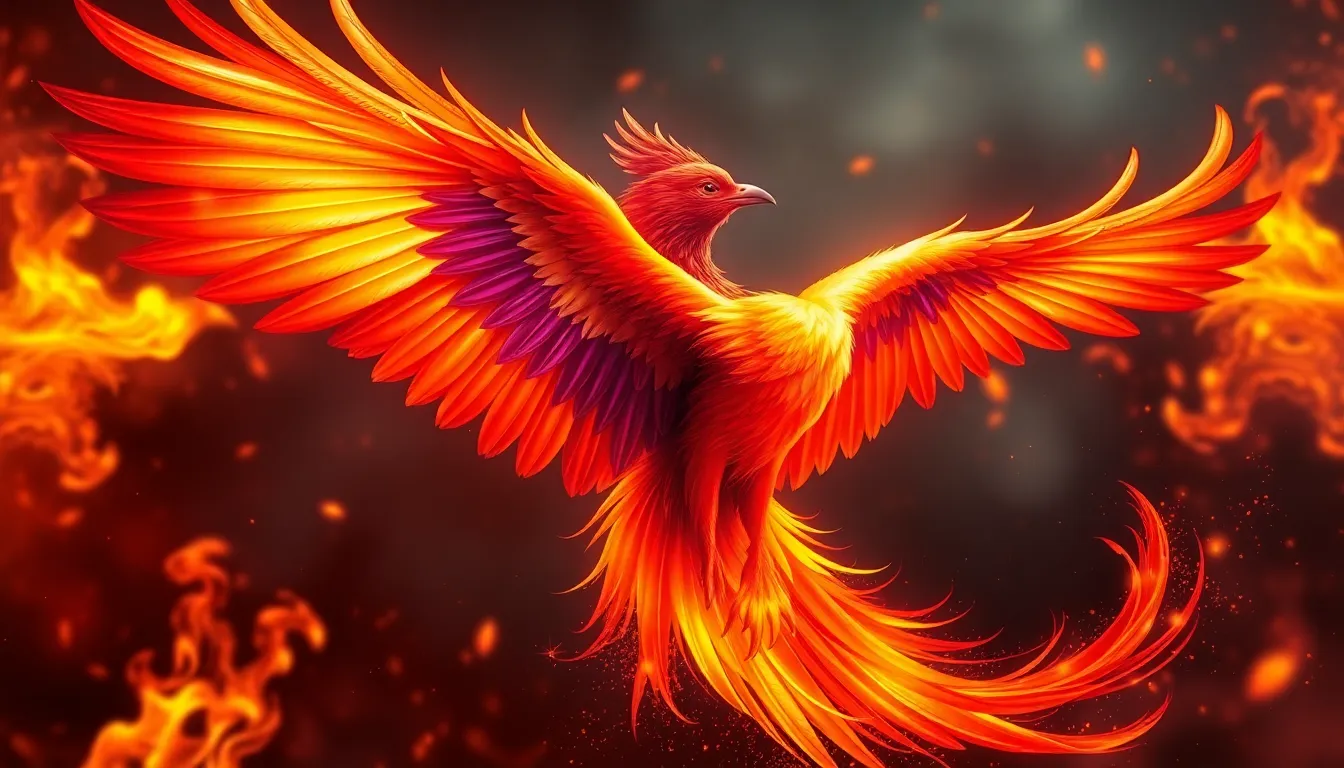
Creating phoenix aesthetic bird artwork allows us to express personal transformation through visual storytelling. Our artistic journey begins with understanding fundamental design principles and selecting appropriate creative tools.
Design Elements to Consider
Phoenix aesthetic bird compositions require careful attention to fire-inspired color schemes that capture the mythical creature’s rebirth symbolism. We recommend starting with a primary palette of crimson red (#DC143C), golden amber (#FFBF00), and deep orange (#FF6347) as our foundation colors. Purple accents (#800080) enhance the mystical qualities while copper tones (#B87333) add metallic brilliance to feather details.
Wing structure forms the centerpiece of compelling phoenix designs, with flowing curves that suggest movement and power. Our feather patterns incorporate both realistic textures and stylized interpretations, using overlapping layers to create depth. Artists achieve dramatic effects by positioning wings in ever-changing poses – spread wide for majesty or folded during the rebirth moment.
Fire elements require strategic placement throughout the composition to maintain visual balance. We integrate flame patterns that spiral around the phoenix body using graduated color transitions from yellow cores to deep red edges. Ember particles scattered throughout the background create atmospheric depth without overwhelming the central figure.
Tail feathers offer opportunities for intricate detailing through flowing ribbon-like forms that extend beyond the main body. We design these elements with varying lengths and curvatures to suggest graceful movement. Traditional phoenix imagery features tail plumes that incorporate flame-like tips dissolving into ash particles.
Tools and Techniques
Digital art software provides the most versatile platform for phoenix aesthetic bird creation, with Adobe Photoshop and Procreate leading our recommended applications. We use layer blending modes like “Screen” and “Overlay” to achieve luminous fire effects that capture the phoenix’s supernatural glow. Brush settings with pressure sensitivity create organic feather textures that respond to stylus movements.
Traditional media approaches offer unique aesthetic qualities that digital methods cannot replicate completely. Watercolor techniques excel at creating fluid color transitions that mirror the phoenix’s ethereal nature. We apply wet-on-wet methods for background flames and wet-on-dry techniques for detailed feather work. Acrylic paints provide vibrant color saturation ideal for bold phoenix representations.
Mixed media combinations expand our creative possibilities by incorporating multiple artistic elements. We layer digital prints with hand-painted accents to merge technological precision with organic texture variations. Metallic leaf applications add authentic shimmer to golden phoenix elements, while textured papers create surface interest that enhances the overall composition.
Sculpture materials like polymer clay allow three-dimensional phoenix interpretations that capture the bird’s majestic presence. We use armature wire frameworks to support extended wing poses and apply color through acrylic paints or specialized clay stains. Wire mesh techniques create convincing flame effects that surround sculptural phoenix forms.
Vector graphics programs like Adobe Illustrator produce clean, scalable phoenix designs suitable for commercial applications. We construct these images using bezier curves that maintain crisp edges at any size. Color gradients simulate fire effects while maintaining the geometric precision that vector formats provide.
Phoenix Aesthetic Bird in Modern Media and Pop Culture
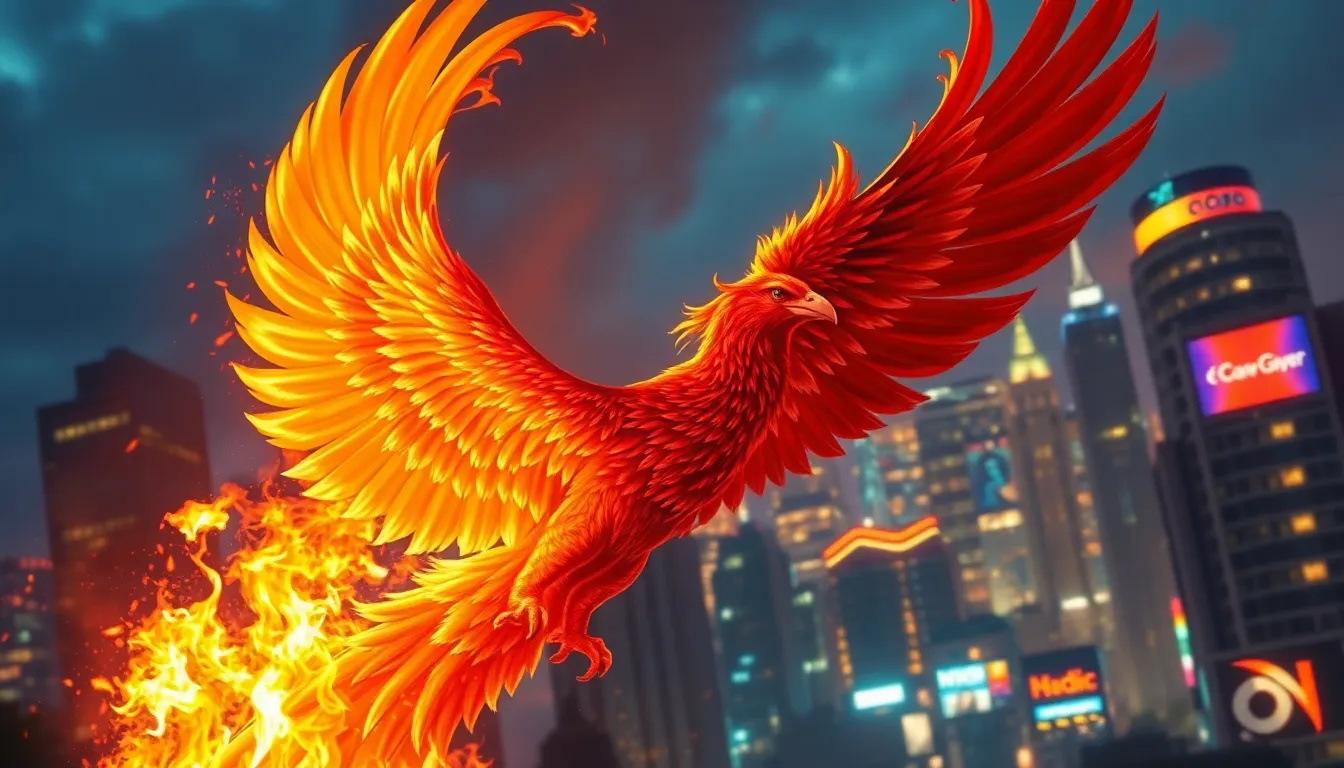
Contemporary entertainment platforms showcase the phoenix aesthetic bird through diverse visual interpretations that captivate global audiences. Marvel’s Dark Phoenix saga transforms Jean Grey into a cosmic entity embodying the phoenix’s destructive and regenerative powers, establishing the bird as a symbol of overwhelming transformation in superhero narratives. Warner Bros.’ Fantastic Beasts series features Fawkes and other phoenix creatures with stunning CGI that emphasizes their ethereal beauty and magical properties. Disney’s adaptation of Mulan presents the phoenix as a guardian spirit, replacing the original dragon companion to reflect themes of female empowerment and ancestral wisdom.
Gaming industry developers integrate phoenix aesthetics into character designs and environmental storytelling across multiple genres. League of Legends features champions like Anivia the Cryophoenix, whose ice-based phoenix design subverts traditional fire imagery while maintaining the rebirth mythology. Industry of Warcraft’s Al’ar encounter in Tempest Keep demonstrates how game designers use phoenix mechanics to create memorable boss fights centered around death and resurrection cycles. Final Fantasy XIV incorporates the Phoenix summon with elaborate animation sequences that showcase the creature’s majesty through particle effects and orchestral soundtracks.
Streaming platforms accelerate phoenix aesthetic visibility through original content and viral social media trends. Netflix’s The Umbrella Academy uses phoenix imagery in promotional materials and plot devices to symbolize character transformations. TikTok creators generate millions of views with phoenix-themed makeup tutorials, digital art timelapses, and cosplay transformations that interpret the mythical bird through contemporary aesthetics. Instagram influencers showcase phoenix tattoos, fashion choices, and home decor items that demonstrate the symbol’s crossover appeal between ancient mythology and modern lifestyle branding.
Music industry artists adopt phoenix symbolism in album artwork, stage designs, and music videos to communicate themes of artistic rebirth. Dua Lipa’s “Future Nostalgia” tour featured phoenix-inspired costumes and stage props that created immersive visual experiences. Electronic music producers create phoenix-themed visualizers and concert projections that synchronize flame effects with beat drops and melodic builds. Album covers across genres from metal to pop incorporate phoenix imagery to suggest artistic evolution and comeback narratives.
Social media algorithms amplify phoenix aesthetic content through hashtag trends and visual recognition systems. Pinterest boards dedicated to phoenix art generate over 2 million monthly searches, with users collecting tattoo designs, digital illustrations, and home decor inspirations. Reddit communities like r/DigitalArt and r/tattoos regularly feature phoenix-themed submissions that receive thousands of upvotes and engagement comments. YouTube tutorials teaching phoenix drawing techniques accumulate millions of views as creators share step-by-step processes for different artistic mediums.
Brand marketing campaigns leverage phoenix aesthetics to communicate corporate transformation and resilience messages. Automotive companies use phoenix imagery in rebranding efforts following bankruptcy or major restructuring events. Technology startups incorporate phoenix symbols in logos and promotional materials to suggest innovation emerging from industry disruption. Fashion brands create limited-edition phoenix collections that target consumers seeking symbolic jewelry and accessories representing personal growth narratives.
Celebrity culture embraces phoenix tattoos and fashion statements as visual representations of public comebacks and personal reinvention. Musicians, actors, and athletes display phoenix imagery during interviews and red carpet appearances to communicate overcoming adversity. Celebrity tattoo artists report increased demand for phoenix designs following high-profile placements on influential personalities. Fashion photographers create editorial spreads featuring phoenix-inspired makeup, lighting, and costume design that influence broader aesthetic trends.
Conclusion
The phoenix aesthetic bird continues to captivate us across every creative medium and cultural boundary we’ve explored. Its timeless symbolism of rebirth and transformation resonates deeply in our modern industry where personal reinvention and resilience matter more than ever.
We’ve witnessed how this mythical creature transcends traditional art forms to influence everything from digital gaming to high fashion. The phoenix’s vibrant fire-inspired palette and graceful forms offer endless creative possibilities that artists and designers consistently embrace.
Whether we’re drawn to its spiritual significance or simply appreciate its visual impact the phoenix aesthetic remains one of the most powerful and versatile symbols in contemporary culture. Its ability to adapt while maintaining its core meaning ensures the phoenix will continue inspiring creators and audiences for generations to come.
Frequently Asked Questions
What does the phoenix symbolize in art and design?
The phoenix represents rebirth, transformation, and resilience across cultures. In art and design, it symbolizes personal growth, overcoming adversity, and new beginnings. Artists use phoenix imagery to convey themes of renewal, hope, and the ability to rise from challenges stronger than before.
What are the main colors used in phoenix aesthetic designs?
Phoenix designs typically feature fire-inspired colors including red (passion and transformation), gold (enlightenment and wisdom), orange (creativity and energy), and purple (mystical transformation). These warm hues create the dramatic, fiery appearance associated with the mythical bird’s rebirth from ashes.
How does phoenix symbolism differ across cultures?
Different cultures interpret the phoenix uniquely: Chinese Fenghuang represents virtue and grace, Japanese Ho-Oh symbolizes peace and prosperity, Persian Simurgh embodies healing and wisdom, while Russian Firebird brings both blessings and challenges. Each culture adds its own spiritual and artistic elements to the phoenix mythology.
What makes phoenix tattoos so popular?
Phoenix tattoos are highly sought-after because they symbolize personal transformation and resilience. The design adapts well to body contours, offers versatile styling options from traditional to contemporary, and allows individuals to express their journey of overcoming life’s challenges and emerging stronger.
What tools are best for creating phoenix aesthetic art?
Digital artists can use Adobe Photoshop, Procreate, or Illustrator for detailed phoenix designs. Traditional media includes watercolors for ethereal effects and acrylics for vibrant colors. Mixed media approaches combining digital and traditional techniques offer the most creative flexibility for phoenix artwork.
How is the phoenix aesthetic used in modern media?
The phoenix appears prominently in movies (Marvel’s Dark Phoenix, Disney’s Mulan), video games (League of Legends, World of Warcraft), music album artwork, and social media trends. It’s used to convey themes of empowerment, transformation, and resilience in contemporary entertainment and marketing.
What are the key visual elements of phoenix aesthetic designs?
Essential elements include sweeping wing patterns with intricate feather details, fire elements with ember particles, dramatic curves suggesting movement, and atmospheric effects. Artists combine organic forms with geometric shapes, ranging from photorealistic to abstract interpretations while maintaining the bird’s majestic presence.
Why is phoenix imagery popular in fashion and home décor?
Phoenix designs offer striking visual appeal and meaningful symbolism that resonates with consumers seeking personal transformation themes. The aesthetic works across price points from high-end runway collections to affordable fast fashion, making it accessible while maintaining its powerful symbolic meaning.

